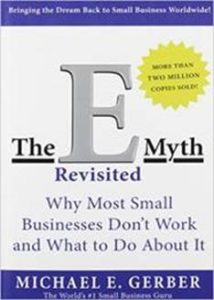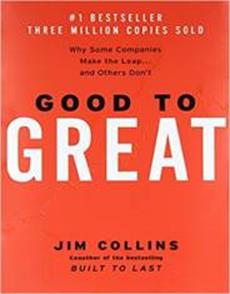Our most recent blog series entitled Managing Remote Employees dealt with the common challenges that small business owners face and suggested many creative management practices that can be implemented with a telephone and app-based timekeeping system. In addition to having good management practices in place, a small business owner must have at the core of his business a proven business philosophy that guides all decisions.
Experience is definitely a good teacher and helps shape guiding principles, but much can be learned from the expertise and experiences of others. We would like to suggest a couple of excellent books that we have read that are landmarks in business publishing. They have been around for a relatively long time and have stood the tests. If you are just too busy to take on a reading project, simply download the audio version and listen to it while driving or doing desk time. We are convinced there are many business savvy takeaways from both books.
The first book is The E-Myth Revisited by Michael Gerber.  Originally written in 1986 and titled, The E-Myth, this powerhouse was revised in 2004 and has sold more than 2 million copies. To exercise a couple of overused clichés, this book is a game-changer and a paradigm shifter. Gerber refers to the well-known statistics for small business: 40% fail in 1 year, 80% fail in 5 years, and 80% of the remaining will ultimately fail. The book describes the approach necessary to be in the minority that succeed. It’s all about working more ‘on’ your business than working ‘in’ your business. If you are wearing all of the hats for your business then you likely aren’t spending enough time ‘on’ your business. The irony is that taking the time to read this book is one of the characteristics of a successful small business owner.
Originally written in 1986 and titled, The E-Myth, this powerhouse was revised in 2004 and has sold more than 2 million copies. To exercise a couple of overused clichés, this book is a game-changer and a paradigm shifter. Gerber refers to the well-known statistics for small business: 40% fail in 1 year, 80% fail in 5 years, and 80% of the remaining will ultimately fail. The book describes the approach necessary to be in the minority that succeed. It’s all about working more ‘on’ your business than working ‘in’ your business. If you are wearing all of the hats for your business then you likely aren’t spending enough time ‘on’ your business. The irony is that taking the time to read this book is one of the characteristics of a successful small business owner.
The second classic book is Good To Great by Jim Collins, written in 2001. Quoted from the Publishers Weekly review on Amazon, “To find the keys to greatness, Collins’s 21-person research team (at his management research firm) read and coded 6,000 articles, generated more than 2,000 pages of interview transcripts and created 384 megabytes of computer data in a five-year project.” The team studied 1435 companies and the result is an engrossing read that lays out the key characteristics of the 11 great companies that went from good to great (i.e. companies that were built to survive leadership changes and generated stock returns that beat the general market by 7 times for at least 15 years). Learn the key characteristics that cause Good companies to be Great. Don’t let your mind drift with the thought that you don’t plan to build a publicly traded company. The ideas presented in the book are fantastic for companies of all sizes.
Quoted from the Publishers Weekly review on Amazon, “To find the keys to greatness, Collins’s 21-person research team (at his management research firm) read and coded 6,000 articles, generated more than 2,000 pages of interview transcripts and created 384 megabytes of computer data in a five-year project.” The team studied 1435 companies and the result is an engrossing read that lays out the key characteristics of the 11 great companies that went from good to great (i.e. companies that were built to survive leadership changes and generated stock returns that beat the general market by 7 times for at least 15 years). Learn the key characteristics that cause Good companies to be Great. Don’t let your mind drift with the thought that you don’t plan to build a publicly traded company. The ideas presented in the book are fantastic for companies of all sizes.
Stay tuned in and stay in touch by following us on Facebook.